
Eszmék, forradalmak, háborúk. Vadász Sándor 80 éves
Sándor Vadász was 80 years old in 2010. His colleagues greeted him with studies. At the end of the volume there is an interview with professor Vadász about his life.
More...We kindly inform you that, as long as the subject affiliation of our 300.000+ articles is in progress, you might get unsufficient or no results on your third level or second level search. In this case, please broaden your search criteria.

Sándor Vadász was 80 years old in 2010. His colleagues greeted him with studies. At the end of the volume there is an interview with professor Vadász about his life.
More...
In this book, the fourth term of the Civil Society Dialogue Grant Program, supported by the Ministry of European Union of the Republic of Turkey, was carried out in partnership with Uskudar University, Haci Habibullah Geredevi Foundation (HAGEV) and CEIPES (Italy) Hand in hand with Refugee Children' project, the papers and speeches presented at the International Symposium on Children and Migration are brought together with the reader.
More...
Roku 2013 môžeme pokojne dať nálepku „rok výročí“. Dňa 1. januára 2013 oslávilo Slovensko svoje dvadsiate narodeniny. Takisto sme oslávili naše dvadsaťročné pôsobenie na pôde OSN, dekádu programu oficiálnej rozvojovej spolupráce a pripomenuli sme si, že ubehlo 1 150 rokov od príchodu Konštantína a Metoda na naše územie. Rok 2013 však mal okrem tej oslavnej aj pracovnú dimenziu: pokračoval v zabehanej tradícii globálnych, ale aj regionálnych problémov, bol rokom udalostí, na ktoré naša zahraničná politika, resp. diplomacia musela neodkladne reagovať, a priniesol i situácie, ku ktorým stačilo zaujať stanovisko, či tie, ktorých priebeh verejnosť ani nezaregistrovala. Ambíciou tejto publikácie, ako takmer každý rok opakujem v predhovore, je analyzovať zahraničnú a európsku politiku Slovenska v celej jej komplexnosti na viacerých úrovniach. Je to cieľ ambiciózny, no nevyhnutný aj preto, že zahraničnopolitická, ale i tá európska kritická debata v SR je na iné zdroje, ktoré uchovávajú pamäť o vývine a ďalšom smerovaní zahraničnej a európskej politiky, chudobná. Prirodzene, ako vydavateľ máme limity (primárne finančné), ktoré nás pri tvorbe tejto publikácie obmedzujú v jej rozsahu i forme, a preto sa v ročenke analyzujú hlavne udalosti, ktoré v RC SFPA a v edičnej rade považujeme za tie najdôležitejšie. V roku 2013 medzi takéto témy nepochybne patrili rokovania o rozpočte Únie na roky 2014 – 2020 a jeho schválenie či prehlbovanie hospodárskej a menovej únie. Obísť nemožno ani rozšírenie Únie o Chorvátsko, ktorého členstvo Slovensko dlhodobo podporovalo, či zamyslieť sa nad úspešne neúspešným Vilniuskym samitom Východného partnerstva. Čoraz dôležitejšou témou boli pokračujúce prípravy na naše prvé predsedníctvo v Rade EÚ. V oblasti bezpečnostnej a obrannej politiky v minulom roku rezonovala na ministerstve obrany príprava a publikácia bielej knihy, v medzinárodnom meradle „vytŕčali“ iránsky jadrový program či situácia v Sýrii. Nemohli sme opomenúť ani čoraz intenzívnejšiu spoluprácu vo formáte vyšehradskej štvorky či aktivity našich subjektov v oblasti verejnej diplomacie a rozvojovej spolupráce. Tieto i mnohé (aj keď nie všetky) ďalšie udalosti roka 2013 si našli priestor už v 15. ročenke. Opäť sme sa snažili, aby autori udalosti nielen opísali, resp. odprezentovali, ale poskytli aj svoju analýzu, videnie a odporúčania. Aj preto sme preferovali autorov s odstupom, t. j. z mimovládneho či akademického prostredia. Prvým v zozname autorov, ktorí poskytli svoj pohľad na rok 2013, je opäť minister zahraničných vecí a európskych záležitostí. Ten vo svojom texte prezentuje problémy a aspekty slovenskej zahraničnej politiky z pohľadu inštitúcie zodpovednej za výkon zahraničnej a európskej politiky. Odborná časť sa začína príspevkom Vladimíra Bilčíka, vedúceho európskeho programu Výskumného centra Slovenskej spoločnosti pre zahraničnú politiku (RC SFPA), ktorý analyzuje podstatné udalosti v európskej politike Slovenska počas roka 2013. Základnou tézou príspevku Zsolta Gála z Filozofickej fakulty Univerzity Komenského je, že aj keď v roku 2013 nastal mierny ekonomický rast a stabilizovala sa situácia v eurozóne, Únia čelila a čelí veľkým vnútorným problémom. Kombinácia vysokého dlhu a nízkeho rastu sa preto podľa autora javí ako čoraz reálnejšia hrozba. Slovenskú energetickú politiku v kontexte nášho fungovania v širšom európskom priestore komplexne zhodnotil analytik RC SFPA Karel Hirman. Svoj pohľad na bezpečnostnú a obrannú politiku Slovenska v roku 2013, ktorý uzatvára časť o pôsobení SR v medzinárodnom prostredí, spracoval Róbert Ondrejcsák, riaditeľ Centra pre európske a severoatlantické vzťahy. Základnou myšlienkou jeho textu je, že rok 2013 bol pri kľúčových témach medzinárodnej bezpečnosti rokom kontinuity, no na úrovni ministerstva obrany bola premárnená šanca nájsť riešenie problémov Ozbrojených síl SR. Druhú časť ročenky, ktorá sa venuje prioritným oblastiam našej zahraničnej politiky, otvára príspevok Tomáša Strážaya, vedúceho výskumného programu Stredná a juhovýchodná Európa v RC SFPA, ktorý analyzuje stredoeurópsku spoluprácu v roku 2013. Riaditeľ RC SFPA a vedúci výskumného programu Východná Európa Alexander Duleba ponúka stručný analytický prehľad vzťahov SR s krajinami východnej Európy v roku 2013. Ako poznamenáva, udalosti na Ukrajine nastolili kľúčovú dilemu pre ďalší vývin zahraničnej politiky SR. Slovensko bude podľa neho musieť buď znova a jasne pomenovať svoje priority vo vzťahoch s krajinami východnej Európy, alebo zostať krajinou s nečitateľným postojom voči rusko ukrajinskej kríze, ktorej vyústenie predurčí ďalší vývin v Európe. Slovenské aktivity na západnom Balkáne, kde majú naše aktivity i diplomacia cveng, už tradične hodnotil nezávislý novinár Július Lőrincz. Tretia časť, ktorá sa zaoberá nástrojmi zahraničnej politiky, pozostáva z textu Nory Beňákovej z občianskeho združenia Človek v ohrození a Petra Brezániho z RC SFPA, ktorí svoju pozornosť upriamili na fungovanie rozvojovej spolupráce. Zhodnotili uskutočňovanie cieľov nastavených v dokumentoch, snažili sa poskytnúť sumár aktivít slovenskej rozvojovej pomoci v roku 2013 a v záujme skvalitnenia a zefektívnenia ODA predložili niekoľko návrhov a odporúčaní. Túto časť uzatvára príspevok Ondreja Ga- žoviča z Ministerstva zahraničných vecí a európskych záležitostí SR, ktorý sa zameral na hodnotenie a prezentáciu aktivít slovenskej verejnej diplomacie. Naďalej pokračujeme v rubrike Z histórie slovenskej zahraničnej politiky, ktorej zaradenie je podmienené pripomenutím si významného výročia súvisiaceho s dôle- žitými osobnosťami alebo udalosťami slovenskej zahraničnej politiky. Dvadsať rokov samostatnej slovenskej zahraničnej politiky takouto udalosťou hodnou zaznamenania určite bolo, preto sme do tejto edície zaradili krátku, ale obsažnú analýzu dvoch dekád našej zahraničnej politiky, ktorú spracoval Alexander Duleba. Expertnú časť tradične dopĺňajú prílohy – chronológia dôležitých zahraničnopolitických udalostí, zoznam medzinárodných zmlúv, informácie o štruktúre a predstaviteľoch orgánov štátnej správy pôsobiacich v zahraničnej politike, zoznam diplomatických misií a predstaviteľov SR v zahraničí, diplomatického zboru v SR, informácie o vojenských misiách v zahraničí a podobne. Pevne verím, že aj táto ročenka si nájde cestu k čitateľom a poslúži všetkým, ktorí sa zaujímajú o minulosť, prítomnosť i budúcnosť Slovenska a jeho zahraničnej politiky. Na záver by som sa rád poďakoval Ministerstvu zahraničných vecí a európskych záležitostí SR za spoluprácu na tomto projekte a za to, že vďaka ich podpore sme v budovaní tejto veľmi potrebnej tradície mohli aspoň v tomto formáte pokračovať.
More...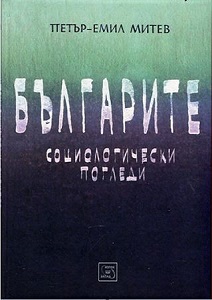
The book concerns the fundamental questions set by the founder of Bulgarian sociology Ivan Hadjiiski: Where are we coming from? What have we gone through? How far have we reached? Where are we going? Sociology is a science in which the person puts his imagination and heuristic potential. Sociology is a craft, in the practice of which the outcome depends on the mastery of the techniques and methodologies, the correct observance of rules and procedures. Sociology is a business that requires certain resources and also can reproduce or increase them. Sociology, however, is something else; it is not only a knowledge of society, but it is a public activity. It loses its meaning beyond the public realization or changes it if this realization does not correspond to the scientific credibility.
More...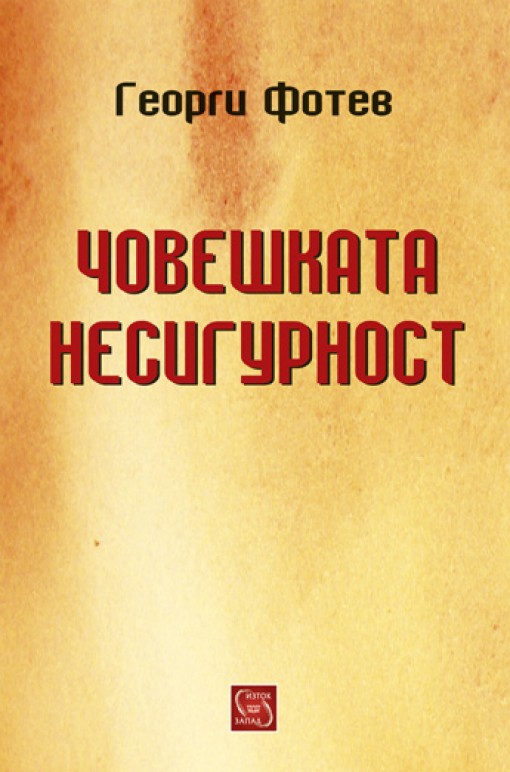
Prof. Georgy Fotev is a Bulgarian sociologist. His scientific works are in the areas of theory and history of sociology and the disciplinary fields of modern sociology. The focus of the research interests of G.Fotev is the nature of sociology as a multiple paradigm science. Another major theme in the works of Georgy Fotev is the dialogue as a base and horizon of multiple paradigm sociology. Georgy Fotev has publications in the fields of historical sociology, sociology of politics, ethnosociology, the crisis of legitimacy, sociology of values, etc. His books "The long night of communism in Bulgaria" and "Bulgarian melancholy" throw light on the dramatic fate of the Bulgarian national society. Georgy Fotev was Minister of Education and Science (1991 - 1992). He is professor emeritus of New Bulgarian University. In 2003 he was awarded the Distinguished Service Award from the American University in Bulgaria. Mankind is shaken by a multitude of uncertainty. There is an increasing perception that uncertainty becomes permanent. The focus is on the existential, social, political, economic, global and other basic varieties of human uncertainty. The author explores the fundamental conditions of human uncertainty and the main forms of her manifestation and experience. The phenomenon is seen in the light of the new science of chaos and complexity in the context of the risky society/world, in terms of catastrophic consciousness and the conditions of crisis types. Particular attention is paid to trust as a fundamental social attitude and condition against decadent attitudes and nihilism.
More...
According to CLEPA (the European association of automotive suppliers), there are more than 3000 automotive suppliers in EU member countries, with 5mln employees and turnover of more than EUR 600 bln. In Bulgaria, there are more than a hundred companies that deliver components to big multinationals from the automotive sectors. The majority of local suppliers (first, second and third tier) are independent local and foreign companies, although subsidiaries of international first-tier suppliers function as well. Irrespective of certain difficulties in the field research, the findings show the following: - Foreign buyers are not interested in the environmental and social policies of local suppliers. The social and environmental impact of the suppliers within the local community is not an interest as well; - Foreign buyers do not embed in their contracts with the suppliers' requirements for compliance with ESG standards; - Local suppliers comply with the legally established norms about air pollution, the protection of soil and water and the management of the waste. How have we interpreted the above findings: buyers rely on local legislation and they do not go beyond. We did not manage to contact the procurement offices of foreign buyers and their boards. We tried to discover evidence in their annual reports and we interviewed the representative offices of big multinationals - European and Asian. Despite the fact that we received similar answers, we did not include them in our analysis. Our research proved the importance of the holistic approach when evaluating sustainable development policy of listed companies. The reverse mirror is not a research method only. It is another tool for evaluating the effectiveness of sustainable framework of corporate governance.
More...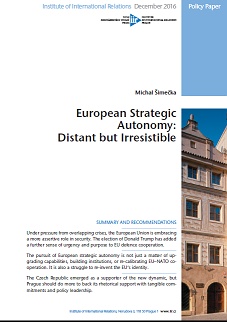
Under pressure from overlapping crises, the European Union is embracing a more assertive role in security. The election of Donald Trump has added a further sense of urgency and purpose to EU defense cooperation. The pursuit of European strategic autonomy is not just a matter of upgrading capabilities, building institutions, or re-calibrating EU–NATO cooperation. It is also a struggle to re-invent the EU’s identity. The Czech Republic emerged as a supporter of the new dynamic, but Prague should do more to back its rhetorical support with tangible commitments and policy leadership.
More...
Since the beginning of 2015, the news about migrant boat disasters in the Mediterranean Sea have been filling the headlines of major national and international media. Horrible pictures of boat wrecks and floating bodies of migrants have made it to covers of well-known newspapers. Very soon, statistics suggesting that 2015 might be the deadliest year for migrants who have been crossing the Mediterranean Sea in search of a better life appeared. However, the death of so many migrants comes as a surprise, as the Mediterranean Sea belongs to one of the busiest shipping lanes in the world. Various different actors (national search and rescue bodies, merchant vessels, fishing boats, military vessels, civilian-volunteer manned vessels, NGO craft and boats under the Frontex mandate), bound by the international search and rescue legislation, can come to rescue migrants’ boats in distress. Since the international search and rescue obligation has not been always followed to the letter, this research has been dedicated to searching for an understanding of the inclusions and exclusions of actors in search and rescue operations in the Central Mediterranean Sea (an area between Northern Africa and Italy). It has also aimed to outline the boundaries that actors may face when entering or exiting the area of search and rescue. This research has conceptualized search and rescue as an assemblage composed of heterogeneous elements that entangle one another and that are entrusted with a strategic purpose. Moreover, it has specifically used Bruno Latour´s approach to assemblages and their mapping, as this has allowed the researcher to understand how inclusions and exclusions of actors in the assemblage arise and what constitutes the boundaries of the assemblage. It is argued that different elements of the search and rescue assemblage – such as legislation, actors’ scripts or their discursive strategies – can become means of both actors’ inclusion in and actors’ exclusion from the assemblage. These elements can at the same time become boundaries for involvement of actors in rescue operations. However, the irregular rhythms of actors’ inclusions and exclusions in search and rescue suggest that actors’ experience of political subjectivity can determine the shape of the assemblage and its boundaries. Furthermore, it is argued that the shape of the Central Mediterranean Search and Rescue assemblage can largely depend on the mechanisms of power being exercised within the assemblage. It is for the lack of power mechanisms that would force actors into the assemblage and also for the existence of mechanisms that make it less probable and more difficult for certain actors to get involved in search and rescue that so many migrants die on their way to Europe.
More...
The aim of this paper is to identify the enduring principles at the basis of Russian military thought, offering an alternative to the contemporary analytical mainstream – which deems Moscow’s military behavior to be revolutionary and unprecedented. This is based on comparative analysis of Russian official military discourse and practice between 2008 and 2016. Critical inspection of the two Military Doctrines approved during this time frame and of various military drills will reveal a series of rhetorical and operational recurrences. Notwithstanding numerous changes at the international and domestic levels that could have had an impact on Russian military behavior, no substantive shift is distinguishable.These empirical findings will constitute the basis for a reconstruction of Russian military thought. Through a deductive method, we will be able to reconstruct the ultimate assumptions granting them logical coherence and legitimization. Far from being incomprehensible, Russian military thought will be presented as the adaptation of classical strategic principles to contemporary contingencies.
More...
In mid-June 2018, the US announced its withdrawal from the UN Human Rights Council. It sat in the Council for the third time since the establishment of the organ in 2006. This time, however, it left is three-year mandate (2017–2019) unfinished. The paper analyses the four main arguments that the US put forward to justify its withdrawal from the Council. It shows that while some of the arguments have some merit, none is truly convincing. The paper also warns against any re-assessment of the current Czech candidacy to the Council.
More...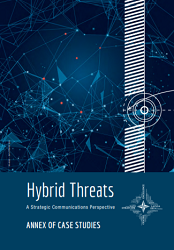
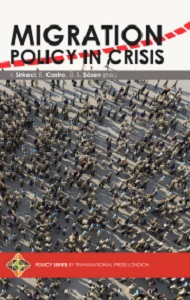
Migration and challenges associated with human mobility are here to stay. We, as migration scholars, reiterate, rethink, reconsider what we do know and identify areas for further investigation constantly. Every year we get intrigued by volumes of research and scholarship presented at the Migration Conferences (TMC) since 2012. At the fifth conference in 2017 held at Harokopio University in Athens, about 400 papers were disseminated by researchers covering different aspects, approaches, methods, and takes on human mobility. This edited volume in hand here, although inspired and shaped by the contributions initially presented at the TMC 2017, is more than a conference proceedings book. The volume includes not only more experienced and distinguished academics but also new researchers committed to high quality scholarship in this field. “Migration has become an everyday topic in the last years, and the arrival of persons fleeing for their lives or human rights or in search of a better life has been deemed as a “crisis”. In reality, though, Politics are creating a crisis of protection. This book flashes out this scenario in Europe, pointing to the crisis of policies towards migrants in the EU. To face the challenges in the current international setting balancing the interests of States and the needs of human beings is essential. This requires analysis a commitment to being comprehensive, propositional and analytical and this book delivers this.” – <em>Liliana Lyra Jubilut, Professor in International Law, Member of the IOM Migration Research Leaders’ Syndicate, Brazil</em> “Whenever we hear the voices of irresponsible populists trying to destroy the European project, we should never forget that we live in and have to fight for an age of enlightenment. The volume at hand provides a superb reminder.” <em>– Markus Kotzur, Chair of European and International Law and Vice Dean for Studies and Teaching, Universität Hamburg, Germany</em> Contents Preface Markus Kotzur 3 INTRODUCTION Ibrahim Sirkeci, Emília Lana de Freitas Castro, Ülkü Sezgi Sözen. 5 HUMANITARIAN SECURITIZATION OF THE 2015 “MIGRATION CRISIS”: INVESTIGATING HUMANITARISM AND SECURITY IN THE EU POLICY FRAMES ON OPERATIONAL INVOLVEMENT IN THE MEDITERRANEAN Maciej Stępka. 9 RESTRICTION, PRAGMATIC LIBERALISATION, MODERNISATION: GERMANY’S MULTIFACETED RESPONSE TO THE “REFUGEE CRISIS” Axel Kreienbrink 31 COMMUNICATING REFUGEES AND HUMAN RIGHTS: THE GERMAN GOVERNMENT’S ASSESSMENT OF THE ROLE OF THE EUROPEAN COURT OF HUMAN RIGHTS Johanna C. Günther 53 SOLIDARITY VS. SOVEREIGNTY: PERSPECTIVE ON THE SLOVAK FOREIGN POLICY REACTIONS TO THE MIGRATION CRISIS Barbora Olejárová. 77 ASYLUM UNDER PRESSURE: INTERNATIONAL DETERRENCE AND ACCESS TO ASYLUM Vasiliki Kakosimou. 95 LEGAL AND CIRCULAR MIGRATION IN THE EUROPEAN UNION MOBILITY PARTNERSHIPS Katarzyna A. Morawska. 103 DEVELOPING THE UNDERSTANDING OF MIGRANT INTEGRATION IN THE EU: IMPLICATIONS FOR HOUSING PRACTICES Maria Psoinos and Orna Rosenfeld. 115 IMMIGRATION AND ELECTORAL SUPPORT FOR THE RADICAL RIGHT: EVIDENCE FROM DUTCH MUNICIPALITIES Panagiotis Chasapopoulos, Arjen van Witteloostuijn and Christophe Boone. 133
More...
Suočavanje s prošlošću, izgradnja kulture sjećanja u istini i pravednosti, jedan je od urgentnih zadataka za zdravlje pojedinca, obiteljske, etničke i religijske zajednice, pogotovo u višeetničkim i višereligijskim postratnim društvima. Konflikti sjećanja nipošto nisu usputni ni beznačajni jer su kolektivna pamćenja odreditelji kako osobnih tako i kolektivnih identiteta, odakle onda proizlazi da konflikti sjećanja mogu imati i razorne posljedice u stvarnim konfliktima progona i ubijanja. Bliža povijest, ratovi '90-ih, potvrdili su da su naši ubilački identiteti takvi jer su osvetnički, jer nalaze svoje opravdanje u razornoj moći sjećanja, konkretno – u zlopamćenju. Osvajački ratovi, s elementima građanskoga rata, u kojima je „etničko čišćenje“ (potpuno uklanjanje drugih s nekoga teritorija) bilo njihov cilj, bili su prije, i ostaju nakon bojnog polja ratovi sjećanja na patnje i žrtve uzrokovane zločinima zlih susjeda.
More...
I have the honour to present this second volume of the “What is the Gender of Security?” series. The OSCE Mission to Bosnia and Herzegovina has partnered with the Sarajevo Open Centre in support of established and emerging practitioners and academics to provide important analysis on the engagement of women in the security sector and other relevant topics pertaining to gender and security. In so doing, we aim to foster synergies among academia, practitioners, and political and security decision-makers, and to highlight the importance of including gender perspectives in all aspects of security. We have partnered with the Sarajevo Open Centre to mark two important anniversaries: 2020 marks 25 years since the end of the conflict in Bosnia and Herzegovina and 20 years since the adoption of the landmark UNSC Resolution 1325 on Women, Peace and Security. The Resolution, unfortunately inspired by the conflicts in BiH and Rwanda in the 1990s, has helped place women’s war and post-war experiences at the forefront of international policy making, especially when it comes to peace negotiations and peace-building, peacekeeping, reconciliation, and reconstruction. Although much remains to be done in the fight to achieve equal rights and opportunities, it is worth recalling the progress achieved so far. To date 83 countries have adopted a National Action Plan for the Implementation of UNSCR 1325, with BiH being one of the first, having adopted its Plan in 2010. I am proud to represent an organization that puts promoting and achieving gender equality within and among participating States, our executive structures and field operations at the forefront of its work. The OSCE adopted its Action Plan for Promotion of Gender Equality in 2004, at a time when gender issues were rarely discussed in international fora. UNSCR 1325 is one of the pillars of our Action Plan and the OSCE Mission to BiH will continue to support BiH partner institutions in promoting its implementation. Since the 1975 Helsinki Final Act (the precursor to the OSCE as we know it today), participating States have recognized the value of a comprehensive approach to security. We remain committed to this approach. Human security cannot be ensured by depending exclusively on democratically-controlled defence and security forces. To achieve sustainable security, access to education and health, economic stability, rule of law, respect for human rights and a stable environment are all crucial. Gender equality and ensuring that youth perspectives play a central role in decision making remains at the heart of the OSCE’s approach. In 2019 the OSCE published research on “Implementing the Women, Peace and Security Agenda in the OSCE Region“ which provides an excellent overview of the implementation of UNSCR 1325. I recommend it to all interested researchers. The world is currently facing a security crisis on a scale more serious than most others in living memory. We are confronted with a pandemic that has forced us all to assume a key role in ensuring the safety and security of our loved ones and ourselves. The spread of the COVID-19 virus has brought into stark relief our global interdependence. It has highlighted the importance of looking out for each other, as well as supporting and protecting the democratic institutions that help our societies function and effectively address crises such as this one. Moreover, it has demonstrated the important role women can and must play as leaders, communicators, researchers and health providers in fighting the pandemic, to the benefit of all. These challenges require us all, whether in government or academia, to continue to collaborate, monitor, analyse, and learn from the experiences we are confronting. It is my sincere hope that, with this second volume, the Sarajevo Open Centre and the OSCE Mission to BiH will together make a valuable contribution to increased knowledge and awareness of many aspects of the UNSCR 1325 implementation.
More...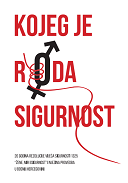
Čast mi je predstaviti ovaj drugi tom zbornika pod nazivom “Kojeg je roda sigurnost?”. Misija OSCE-a u Bosni i Hercegovini djelovala je u partnerstvu sa Sarajevskim otvorenim centrom da bi pružila podršku etabliranim praktičarkama i praktičarima te članovima i članicama akademske zajednice, kao i onima koji su tek u usponu, da izvrše važnu analizu angažmana žena u sigurnosnom sektoru, kao i drugih relevantnih tema koje se tiču roda i sigurnosti. Čineći to, naš je cilj da kultiviramo sinergije između akademske zajednice, praktičara i donosilaca odluka u oblastima politike i sigurnosti, kao i da naglasimo važnost uključivanja rodne perspektive u sve aspekte sigurnosti. Djelovali smo u partnerstvu sa Sarajevskim otvorenim centrom da bismo obilježili dvije važne godišnjice: 2020. godine se obilježava 25 godina od kraja sukoba u Bosni i Hercegovini i 20 godina od usvajanja znamenite Rezolucije 1325 Vijeća sigurnosti UN-a “Žene, mir i sigurnost”. Ta Rezolucija, nažalost inspirisana sukobima u BiH i Ruandi 90-ih godina 20. vijeka, pomogla je da se ratna i poslijeratna iskustva žena stave u prvi plan kada je u pitanju kreiranje međunarodnih politika djelovanja, naročito u vezi sa mirovnim pregovorima i izgradnjom mira, očuvanjem mira, pomirenjem i obnovom. Iako ostaje još mnogo toga da se uradi u borbi za ostvarenje jednakih prava i mogućnosti, vrijedi se podsjetiti dosadašnjeg napretka. Do danas su 83 države usvojile nacionalni akcioni plan za provedbu Rezolucije 1325 Vijeća sigurnosti UN-a, pri čemu je BiH bila jedna od prvih, usvojivši svoj plan 2010. godine. Ponosna sam što predstavljam organizaciju koja u prvi plan svog rada stavlja promociju i ostvarenje rodne ravnopravnosti u državama članicama, našim izvršnim tijelima i terenskim misijama, kao i između njih. OSCE je usvojio svoj Akcioni plan za promociju rodne ravnopravnosti 2004. godine, u vrijeme kada se o rodnim pitanjima rijetko razgovaralo u međunarodnim forumima. Rezolucija 1325 Vijeća sigurnosti UN-a jedan je od stubova našeg Akcionog plana, a Misija OSCE-a u BiH će nastaviti da pruža podršku partnerskim institucijama iz BiH u promociji njene provedbe. Još od Završnog dokumenta iz Helsinkija usvojenog 1975. godine (koji predstavlja prethodnicu OSCE-a kakvog poznajemo danas), države članice su prepoznale vrijednost sveobuhvatnog pristupa sigurnosti. Ostajemo predani tom pristupu. Sigurnost ljudi ne može biti osigurana oslanjajući se isključivo na snage odbrane i sigurnosti koje se nalaze pod demokratskom kontrolom. Da bi se postigla održiva sigurnost, od ključne su važnosti pristup obrazovanju i zdravstvu, ekonomska stabilnost, vladavina prava, poštovanje ljudskih prava i stabilno okruženje. Rodna ravnopravnost i osiguravanje da gledišta mladih igraju jednu od centralnih uloga u donošenju odluka ostaju u središtu OSCE-ovog pristupa. OSCE je 2019. godine objavio istraživanje pod nazivom “Provedba Agende ‘Žene, mir i sigurnost’ u državama članicama OSCE-a”, u kome je pružen izvanredan pregled provedbe Rezolucije 1325 Vijeća sigurnosti UN-a. Preporučujem ga svim zainteresovanim istraživačima i istraživačicama. Svijet se trenutno suočava sa sigurnosnom krizom ozbiljnijom od većine drugih u našem životnom vijeku. Suočeni smo sa pandemijom koja nas je sve prisilila da odigramo jednu od ključnih uloga u pružanju sigurnosti sebi i svojim najmilijima. Širenje koronavirusa zorno je pokazalo našu globalnu međuzavisnost. Ono je naglasilo važnost brige jednih za druge, kao i važnost pružanja podrške i zaštite demokratskim institucijama koje pomažu našim društvima da funkcionišu i djelotvorno rješavaju krize poput ove. Štaviše, ono je pokazalo važnu ulogu koju žene mogu i moraju igrati kao liderke, komunikatorice, istraživačice i zdravstvene djelatnice u borbi protiv pandemije, za dobrobit svih nas. Ti izazovi traže od svih nas, bez obzira da li radimo u tijelima vlasti ili u akademskoj zajednici, da nastavimo da sarađujemo, pratimo, analiziramo i učimo iz iskustava sa kojima se suočavamo. Iskreno se nadam da će, ovim drugim tomom, Sarajevski otvoreni centar i Misija OSCE-a u BiH zajedno dati vrijedan doprinos većem nivou znanja i svijesti o mnogim aspektima provedbe Rezolucije 1325 Vijeća sigurnosti UN-a.
More...
U ovoj knjizi donosimo transkript nekoliko izlaganja sa konferencije koju je Documenta organizirala u Zagrebu u rujnu 2013. godine s ciljem predstavljanja višegodišnjeg snimanja i objave intervjua na web stranici www.osobnasjecanja.hr. Uz komentare i pitanja nekih od sudionika konferencije, u knjizi možete pročitati uvodni tekst koji je na konferenciji izložila urednica kolekcije Maja Dubljević, te transkript izlaganja Vesne Jakumetović iz Vukovara, Ane Raffai iz Zagreba, te Đorđa Gunjevića iz Pakraca. Predstavljamo vam i dvije studije slučaja u kojima su korišteni snimljeni intervjui - studiju slučaja publicistkinje i istraživačice, Vesne Kesić „Španovica / Novo selo / Španovica: Znalo se? Nije se znalo?“ te studiju slučaja povjesničara Marka Smokvine “Stara Gradiška kao paradigma hrvatske povijesti 20. stoljeća”.
More...![„[…] a oto ginie marnie, pamięci nawet po sobie nie zostawując, na jaką zasłużył”](/api/image/getbookcoverimage?id=document_cover-page-image_1232894.png)
The text is dedicated to the character of the king Sigismund II Augustus in Józef Ignacy Kraszewski’s novels: "Mistrz Twardowski" ("Mister Twardowski", 1840), "Zygmuntowskie czasy" ("Sigismund’s Times", 1846), "Dwie królowe" ("Two Queens", 1884) and "Infantka" ("Infant Princess", 1884). It also refers to the portrayal of this monarch in "Wizerunki książąt i królów polskich" ("Portrayals of Polish Princes and Kings", 1888), written by the same author. The writer’s vision, sometimes contradicting historic sources, consists of portraying the king as a sentimental-romantic lover type. The evolution of the author’s attitude towards the last ruler from the Jagiellonian dynasty is shown by his ceasing to accept this kind of character type and eventually beginning to criticize it as a threat to his “manliness”. According to the writer, the lack of the latter trait make it impossible for Sigismund II Augustus to be a good monarch, which is why his achievements are undervalued in Kraszewski’s novels.
More...
Jan Matejko (1838–1893) is the author of more than three hundred twenty oil paintings, several thousand drawing sketches, a couple of hundred projects of the polychrome, stained glass, altars, and statues. He was a collector. He was a titan, not only artistic. His paintings received the highest awards. Also, honorary memberships of the European artistic associations were bestowed on him. In 1873 Matejko became the director of Cracow Fine Arts School. The artist conducted an inventory of historical places, creating an extraordinary pictorial documentation of often no longer existing objects. He acquired artifacts related to historical figures for his own collection. His painting talent and historical passion developed in parallel. From the beginning of his artistic journey, he embarked on pilgrimages to churches, libraries, monasteries, and through the streets of cities. He filled the pages of the album "Skarbczyk". He copied, drew, documented. The important fact is that since 1856, Matejko had a permanent right to access the valuable manuscript collections of the Jagiellonian Library, and from 1864 he was a member of the Cracow Scientific Society. Matejko’ s private library proves his extensive interests. He read about art, philosophy, and history. His collection included: Marcin Bielski’ s "Polish Chronicle", works by Jan Długosz, "Historical annals", "Cracow annals", "The Templates of Medieval and Renaissance Art after the End of the Seventeenth Century in Old Poland" ("Wzory sztuki średniowiecznej i z epoki Odrodzenia po koniec wieku XVII w dawnej Polsce") by Edward Rastawiecki and Aleksander Przezdziecki, as well as many other works in the field of history, philosophy, ethnography, given to him by the authors. He actively took part in the work of the Department of Archaeology and Fine Arts of the Scientific Society. Matejko depicted events related to the figure of Sigismund II Augustus in his works, covering various periods of his life as the heir to the throne and later as the king. He created portrait sketches, compositional sketches for paintings, historical paintings, and immortalized him in the work "Polish Clothing 1200–1795" ("Ubiory w Polsce 1200–1795"). The artist collected artifacts related to the Jagiellonian era.
More...
In the political and social circumstances of the partitions, when throughout the 19th century and until 1918, efforts were made to consolidate Polish national identity, interest in Old Polish literature and culture, and especially in the Sigismund times as the “golden age” of the Republic, did not wane. In the historiography, literature and art of the time, in numerous publications in books and periodicals, one can observe a focus on the person of King Sigismund II Augustus. A kind of summation of nineteenth-century knowledge and perceptions of him are the dramatic works, of which the king is the protagonist and which saw the light of day in print and on theatrical stages in the early twentieth century. The most outstanding of these is the unfinished, posthumously reconstructed work Zygmunt August by Stanisław Wyspiański, which seems to be an attempt to synthesize many images of the hero, taken from various sources (lover, husband, son, promoter of Renaissance culture, defender of the Polish language, ruler of the Republic). The text of the drama and the surviving documents confirm that Wyspiański made use of numerous 19th-century publications related to the Sigismund theme, which at the same time provided the context for the reception of his drama by his contemporaries: literary and visual art works, source editions, scientific and popular historical and cultural studies; some of Wyspiański’s reading can be guessed at from their time and place of publication and popularity in the era. In this article, Wyspianski’s history of Sigismund Augustus provides a starting point for observing the 19th-century reception of the figure of the last Jagiellonian, as revealed by the facts from the history of the publishing movement, which are certain or probable sources of Wyspiański’s erudition and artistic inspiration, as well as an appropriate context for analyzing and interpreting his work.
More...
In Polish film production of the interwar years, historical films were scarce. The main reason constituted very high cost of costumes and sets, which, with the notorious lack of funds in our film industry, was a great handicap. Despite these problems, several worthwhile historical films were created. All of them told the history of Poland or were set in Poland of the past eras. We did not produce films set in other parts of the world. The earliest era which our filmmakers reached was the reign of King Sigismund Augustus. The first of these films set in this era was "Pan Twardowski" (dir. Henryk Szaro, 1936) – a screen adaptation of the Polish legend about the Cracow sorcerer. One of the film’s scenes featured Sigismund Augustus. The second is "Barbara Radziwiłłówna" (dir. Józef Lejtes, 1936) – the story of a love affair and a secret wedding between the king and a Vilnius magnate lady. Both were shot with great panache, and both were praised by reviewers, although there was no shortage of criticism regarding the historical fidelity of certain elements, costumes as one example. Another cinematic era was the time of the Swedish invasion of Poland, the so-called Swedish Deluge between 1655–1660, and the heroic defense of the Jasna Góra monastery (Polish sacred place) shown in the film "Prior Kordecki – defender of Częstochowa” (dir. Edward Puchalski, 1934). Two films told the story of Tadeusz Kościuszko – the Polish hero and leader of the uprising in 1794. These were "Kościuszko’s First Love" (dir. Jerzy Orthon, 1929) and "Kościuszko at Racławice" (dir. Józef Lejtes, 1938). Unfortunately, both were not successful. Another six films were set in the 19th century. The output of historical cinema of the interwar years is not very numerous. Many of them were accused of being inconsistent with reality or lacked attention to detail, which, given the very difficult situation of our cinematographic industry and the specific requirements of the market, should not be surprising. Despite the adversity, several films of great value were made, and some of them, such as "Barbara Radziwiłłówna" by Józef Lejtes, have permanently entered the canon of the Polish cinema.
More...